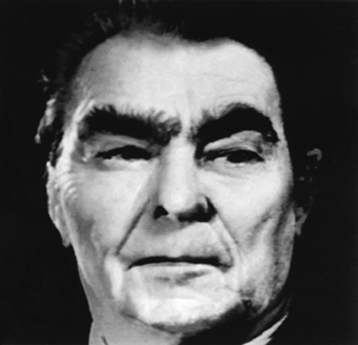'Photography Now' at the V&A and the work of John Stewart.
NANCY BURSON, who makes what they call computer-generated composite photo-portraits, plays variations on a gimmick. She feeds photographs into the memory of her computer, which breaks them down into so many units of visual information (pixels, in dataspeak), raw material for the photo-manipulator. Bur-son's Warhead I, for instance, proposes a physiognomic merger between Leonid Brezhnev and Ronald Reagan.
Cast as competing pixels in the computer memory, the mixed-up powermongers struggle for facial su-premacy: in the resulting gelatin-silver print, the image of composite superpowerfulness, the eyebrows are unmistakably Brezhnev (unless Denis Healey, somehow, got mixed up in the equation) while the mouth is definitely Reagan, the old cowboy's set grimace. Reagan got 55 per cent of the pixels to Brezhnev's 45 per cent, a ratio that reflected the number of nuclear warheads in each leader's arsenal when Burson made the work - her point, presumably, is that while the nuclear pact is based on the threat of terminal hostilities, it is also the ultimate marriage.
'Photography Now', a cautious exhibition with a bold title, suffers from its own identity crisis. Mark Ha-worth- Booth's show isn't so much a statement as an index of possibilities, a sprawl of images that has you wondering quite what photography now is, or is meant to be. 'Photographies Now' might have been more apt, since the exhibition finds room for, inter alia, art photography, news photography, advertising photography, documentary photography, landscape photography and fashion photography. It manages to be confusing and absorbing at the same time.
Burson's computerised hybrids - others include a remarkably docile-looking composite of Stalin, Mussolini, Mao, Hitler and the Ayatollah Khomeini - establish one of this disparate exhibition's guiding themes. They are demonstrations of seamless forgery, statements that...

Positive Views
07-03-1989

